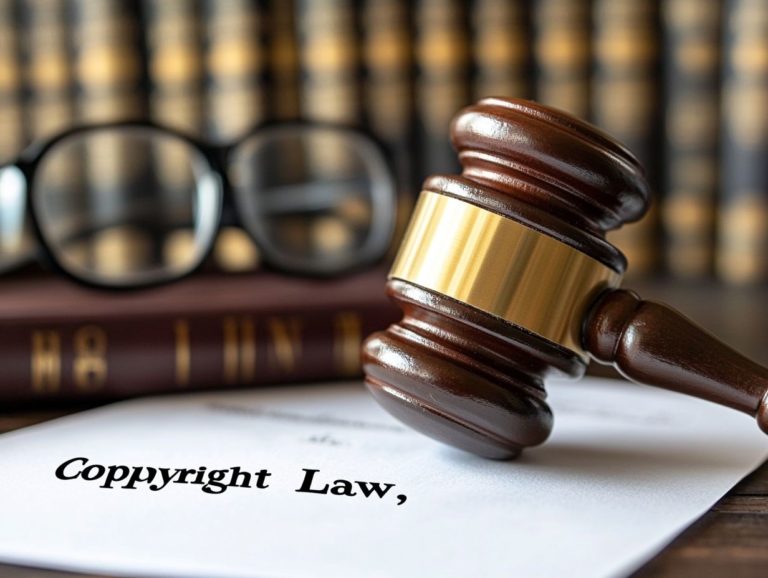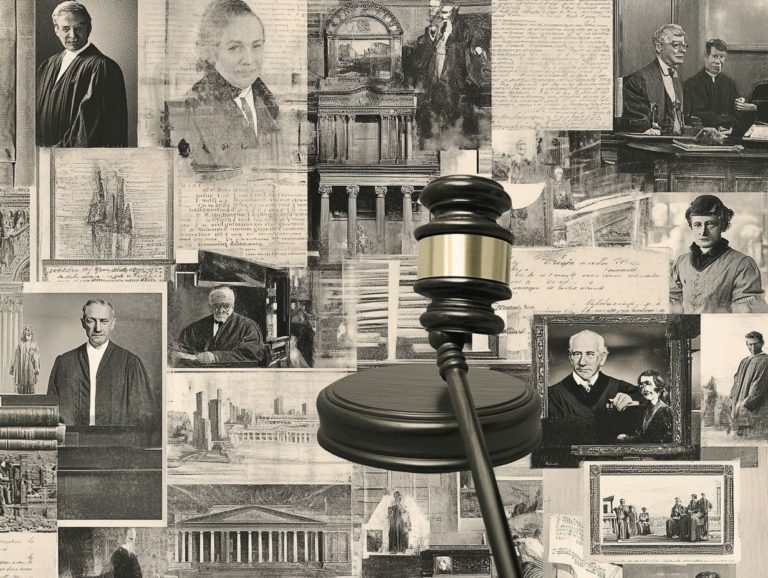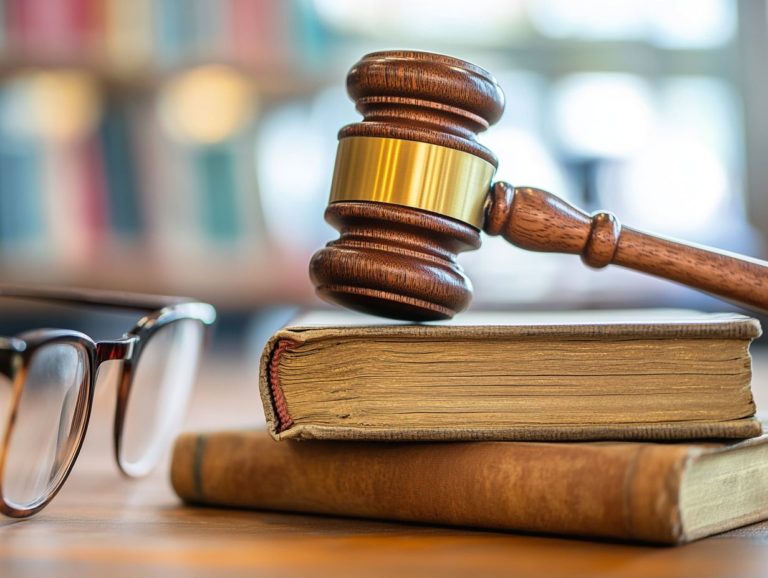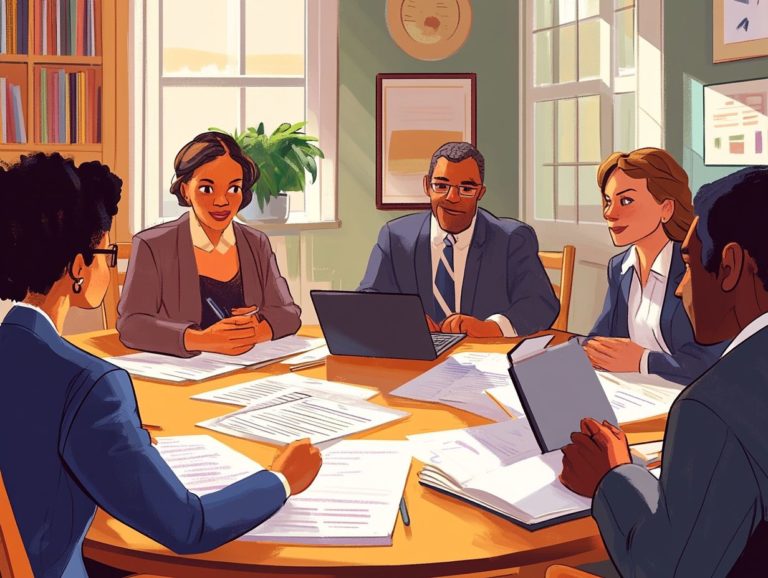5 Notable Copyright Disputes in Film History
Throughout cinematic history, you ll find that iconic films like The Birth of a Nation, The Wizard of Oz, The Godfather, Star Wars, and Avatar have not only shaped culture but also ignited significant copyright disputes.
These conflicts don t just affect the creators involved; they ripple through the broader film industry, impacting artistic expression and innovation. Let s dive into the exciting world of copyright disputes in film, examining their effects on the creative process, offering strategies for avoidance, highlighting notable recent cases, and envisioning the future landscape of copyright in film.
Join in as you navigate this intricate terrain, uncovering how copyright influences the stories you cherish.
Contents
- Key Takeaways:
- The Birth of a Nation (1915)
- The Wizard of Oz (1939)
- The Godfather (1972)
- Star Wars (1977)
- Avatar (2009)
- How Have Copyright Disputes Shaped the Film Industry?
- Frequently Asked Questions
- What are some notable copyright disputes in film history?
- What were the outcomes of these copyright disputes?
- Do copyright disputes only involve music and books?
- What is the importance of copyright in the film industry?
- How can filmmakers avoid copyright disputes?
- Are there any ongoing copyright disputes in the film industry?
Key Takeaways:
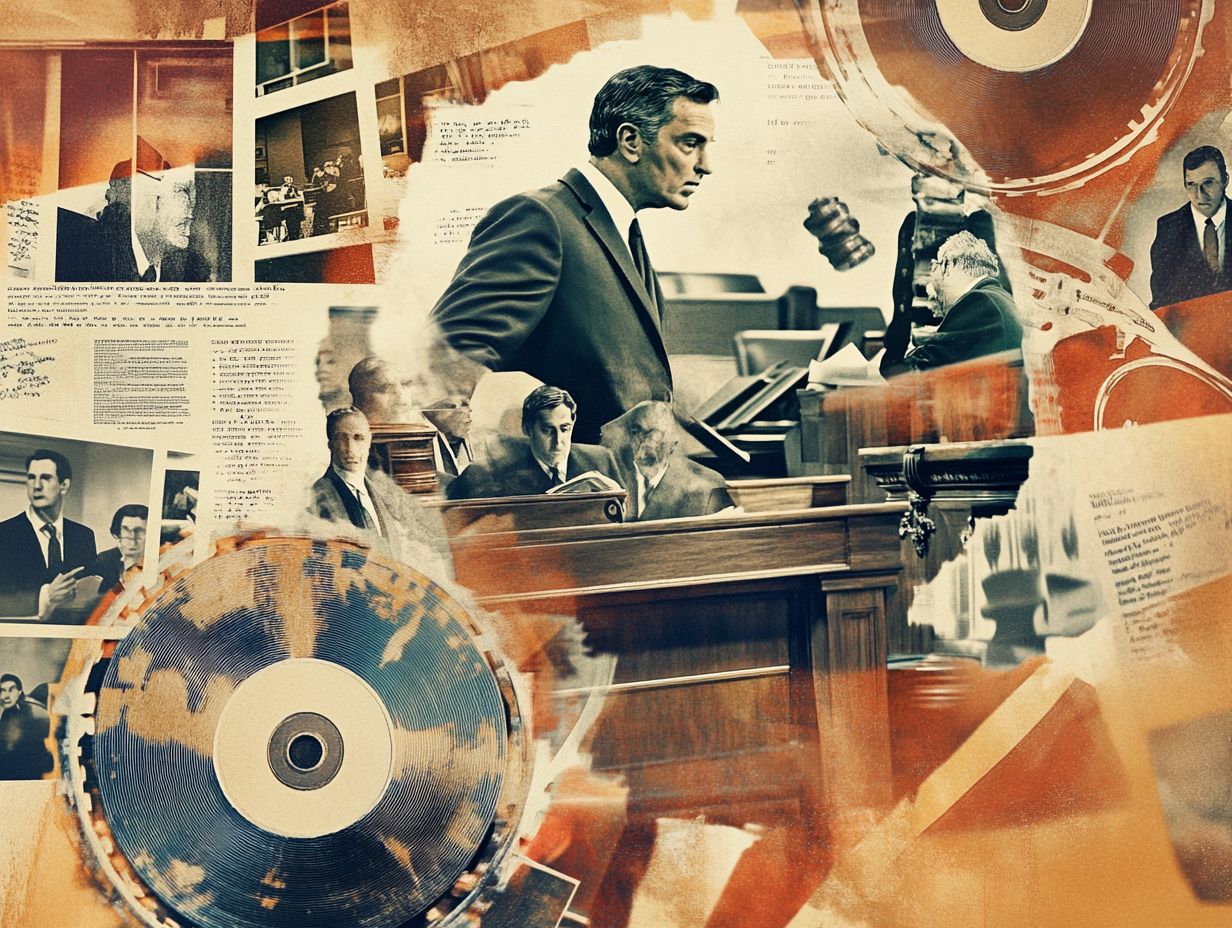
The film industry has a long history of copyright disputes, from the controversial themes of The Birth of a Nation to the iconic music of The Wizard of Oz. Key factors include originality, ownership, and fair use, all of which can significantly impact creativity.
The Birth of a Nation (1915)
The Birth of a Nation, a landmark film released in 1915, didn t just make waves in cinematic history; it sparked intense debates about copyright infringement and the boundaries of artistic expression in the movie industry, especially regarding how historical narratives can be portrayed under copyright law.
This pivotal work set new technical standards for filmmaking with its innovative narrative techniques and editing. However, it also raised crucial ethical questions about representation and cultural sensitivity in cinema.
Its controversial depiction of race relations and glorification of the Ku Klux Klan generated significant backlash and legal scrutiny. The court cases that followed grappled with the delicate balance between protecting artistic freedom and guarding against harmful stereotypes.
In doing so, it highlighted the pressing need for clear copyright guidelines, allowing filmmakers to explore complex themes while acknowledging the responsibilities inherent in artistic expression.
The Wizard of Oz (1939)
The Wizard of Oz, released in 1939, has undoubtedly secured its status as a cherished classic. You can see how copyright law weaves itself into the fabric of artistic inspiration, particularly through its unforgettable storytelling elements that have sparked countless adaptations and interpretations over the years.
Its enchanting narrative and stunning visuals captivated audiences when it first premiered and left an indelible mark on pop culture. The film’s iconic characters and memorable phrases have become part of our collective consciousness, frequently referenced across various media.
Delve into its copyright history, and you’ll find it equally intriguing; the legal frameworks surrounding its original creative works have ignited numerous discussions and disputes over payments made to creators for the use of their work and the balance between safeguarding artistic creations and encouraging innovation in cultural storytelling.
The Godfather (1972)
The Godfather, a cinematic masterpiece that graced the screens in 1972, didn t just set the gold standard for storytelling; it also sparked vital conversations about copyright protection and infringement claims, particularly regarding its adaptations and the ensuing legal battles.
Its captivating narrative draws you in with complex character arcs and moral dilemmas, influencing a wave of filmmakers eager to explore the intricate layers of familial loyalty and crime. Many subsequent films borrow from its thematic richness, showcasing a remarkable evolution in storytelling.
The controversies about ownership and adaptation rights serve as important reference points in various courtroom cases, shedding light on broader issues of creative rights in an industry often caught in the delicate balance between inspiration and originality.
Star Wars (1977)
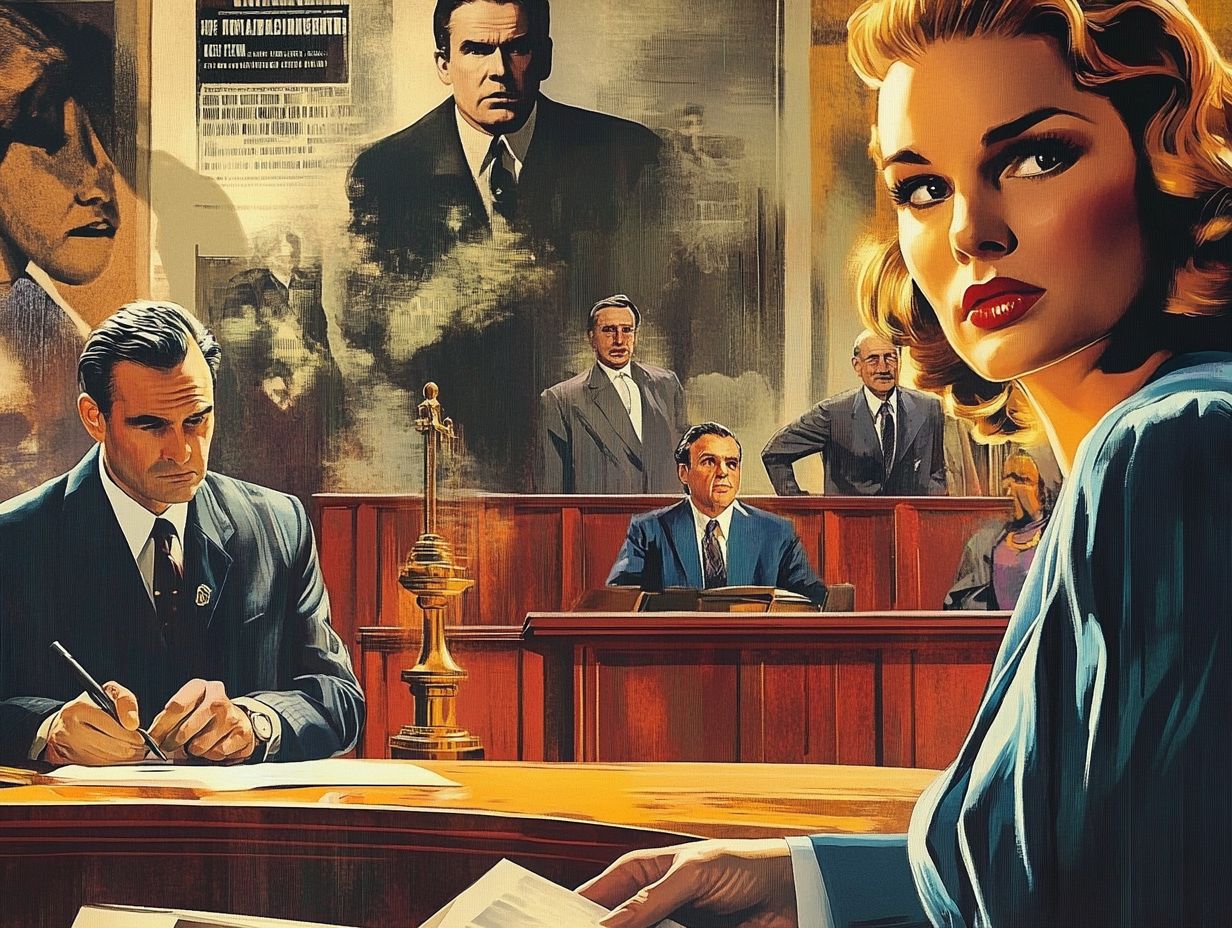
Star Wars, the iconic space opera that burst onto the scene in 1977, didn’t just revolutionize the film industry; it also found itself at the center of numerous copyright disputes and cinematic controversies. These issues exposed the complexities of intellectual property in creative works.
This groundbreaking film redefined visual storytelling, introducing a plethora of enduring tropes that have since become cornerstones of modern cinema, including the hero’s journey and the classic battle between good and evil.
Its cultural impact has inspired countless filmmakers and writers, ushering in an era where mythic narratives combined with cutting-edge special effects captivated audiences around the globe.
As the franchise expanded, it encountered significant copyright challenges that reshaped discussions about ownership in the arts, sparking debates that reverberated throughout the industry.
This tension mirrored broader trends in filmmaking, compelling creators and legal experts alike to adeptly navigate the evolving landscape of intellectual property rights.
Avatar (2009)
Avatar, released in 2009, did more than just shatter box office records; it ignited crucial conversations about copyrightability and the protection of creative works. Various legal battles tested the limits of artistic freedom in filmmaking.
As filmmakers embrace technological advancements, the groundbreaking visual effects and immersive storytelling in this blockbuster prompted essential questions about ownership and originality.
This film showcased cutting-edge 3D technology and integrated innovative motion capture techniques that transformed character animation. These technological marvels often took center stage in legal discussions as creators navigated copyright law, striving to protect their artistic innovations while fostering collaborative creativity in the industry.
Understanding how these elements interact helps grasp the broader implications for future cinematic projects and the ongoing evolution of legal frameworks in filmmaking.
How Have Copyright Disputes Shaped the Film Industry?
Copyright disputes have significantly influenced the film industry, shaping not just the legal landscape but also the essence of artistic expression. Filmmakers navigate the intricate world of copyright law, striving to safeguard their creative rights while often becoming embroiled in legal battles over ownership and inspiration.
The repercussions of these disputes extend well beyond the courtroom, frequently leading to substantial shifts in industry practices and policies. For example, the high-profile ‘Blurred Lines’ verdict compelled filmmakers to reconsider how they draw inspiration from existing works.
The looming threat of litigation can stifle creativity. Artists must tread carefully around the delicate boundaries of originality.
As creators engage with these challenges, the very essence of storytelling hangs in the balance, prompting them to seek alternative methods of expression that remain within legal parameters yet still resonate powerfully with audiences.
Key Factors in Copyright Disputes
Key factors in a copyright dispute often revolve around how closely two works resemble each other, proofs of copying, and the de minimis exception, which refers to something too minor to count legally. These aspects play a crucial role in shaping legal interpretations and outcomes in cases concerning creative works.
When determining substantial similarity, courts engage in meticulous comparisons between the original and the allegedly infringing works. They assess the unique elements that may have been borrowed, requiring a keen eye for detail.
For instance, in the case of Twin Peaks Productions, Inc. v. Publishing Company, imagery and narrative components were carefully scrutinized, highlighting how subjective perceptions can sway judicial rulings.
The burden of proof regarding copying can shift based on circumstantial evidence, such as access to the original work. A notable example is the Jurisich v. E!, Inc. case, where access emerged as a pivotal issue.
The de minimis exception introduces intriguing questions about what truly constitutes an insubstantial representation. This was particularly evident in the Campbell v. Acuff-Rose Music, Inc. case, which allowed for certain transformative uses despite earlier encroachments.
How Do Copyright Disputes Affect the Creative Process?
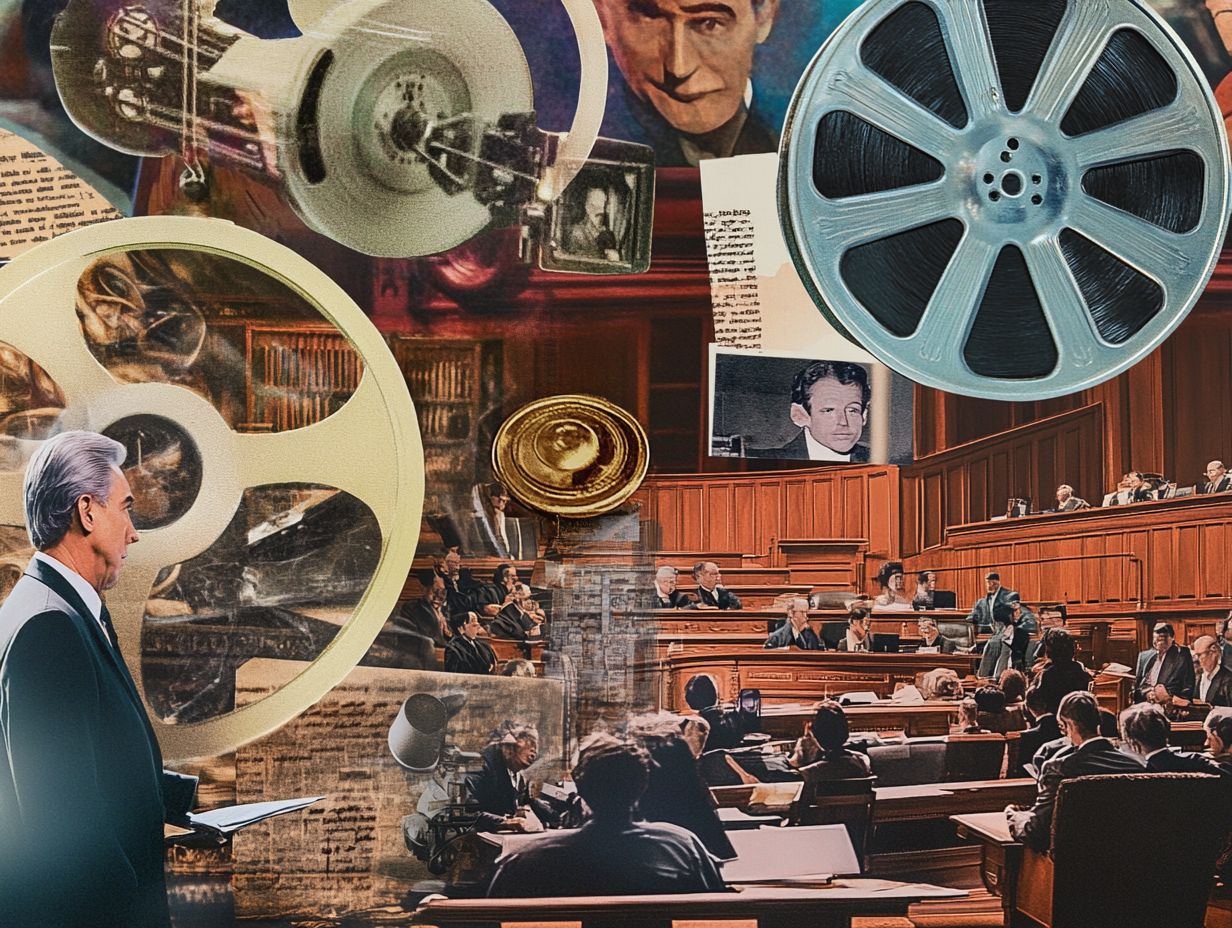
Copyright disputes profoundly influence your creative process as a filmmaker. You must understand the legal rules that can restrict your artistic expression and shape your storytelling decisions.
These challenges may prompt you to reassess your approach. This can lead to significant revisions in how you execute plots or represent visuals.
For instance, the case of The Last Temptation of Christ sparked major debate over its interpretation of biblical narratives. The resulting controversy altered its promotional strategies and changed how filmmakers like you view story ownership and cultural representation.
Similarly, music rights disputes often result in last-minute changes that reshape scenes, highlighting how copyright concerns can stifle innovation or lead to unexpected artistic outcomes.
What Are Some Strategies for Avoiding Copyright Disputes?
To navigate copyright disputes, you can adopt a series of strategic measures. Start by ensuring your creative works are properly registered for copyright. Gain a solid understanding of ownership rights and implement effective idea protection methods that shield your artistry.
Consult legal professionals who specialize in entertainment law for invaluable insights into copyright complexities. Establish clear contracts outlining the rights and responsibilities of everyone involved to reduce misunderstandings that could spark disputes.
Raising your awareness about the copyright laws that pertain to your projects is essential. Understanding fair use the ability to use existing materials without permission empowers you to create freely without the looming shadow of legal repercussions.
By fostering a culture that respects intellectual property, you can immerse yourself in your craft while effectively minimizing potential risks.
What Are Some Recent Copyright Disputes in the Film Industry?
Recent copyright disputes in the film industry have brought ongoing legal battles to the forefront. They reveal the intricate complexities of copyright protection in our ever-evolving digital landscape.
Take the case surrounding the documentary Super Size Me, which faced claims over using footage from a competing fast-food chain. The decision ultimately favored fair use, marking a victory for filmmakers and affirming their right to critique larger players in the industry.
Similarly, the controversy over the animated classic The Lion King sparked debates about the fine line between artistic inspiration and outright copying, illuminating the delicate balance creators must navigate.
These examples highlight the crucial need for filmmakers like you to stay informed about copyright law. Understanding these cases can significantly influence your creative rights and future projects.
What Is the Future of Copyright in Film?
The future of copyright in film is on the brink of transformation. The movie industry is navigating advancements in technology and shifts in copyright law that could redefine your artistic freedoms and ownership rights.
As this landscape evolves, digital distribution presents both opportunities and challenges. While it offers greater access to wider audiences, it also complicates traditional rights management models. You’ll need to navigate these changes carefully, ensuring that your creative works remain protected amid the rise of streaming platforms and content-sharing sites.
Embrace new technologies, like blockchain for securing ownership! By staying informed about legal developments, you can adapt your strategies to maintain control over your intellectual property. This ensures that your artistic visions are shared widely and respected.
Frequently Asked Questions
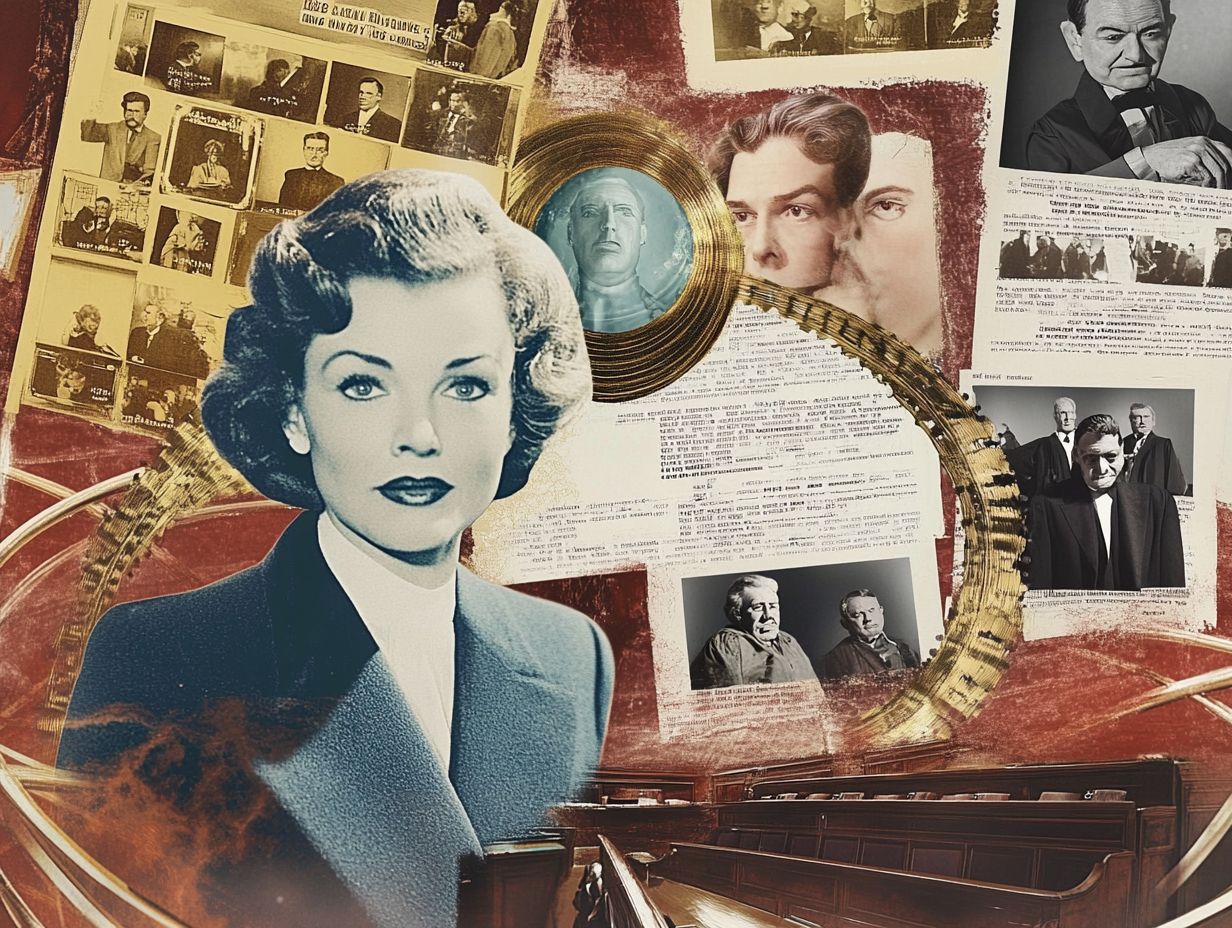
What are some notable copyright disputes in film history?
- The ‘Blurred Lines’ lawsuit involved Marvin Gaye’s family suing Robin Thicke and Pharrell Williams for copyright infringement over similarities to Gaye’s ‘Got to Give It Up.’
- In the ‘Godfather’ lawsuit, Mario Puzo’s estate took Paramount Pictures to court for using material from his novel without permission in ‘The Godfather Part II.’
- George Lucas faced a lawsuit from the creators of ‘Battlestar Galactica’ for alleged copyright infringement concerning ‘Star Wars.’
- An author accused Stephenie Meyer of plagiarism in the ‘Twilight’ lawsuit regarding her vampire romance series.
- James Cameron was sued in the ‘Avatar’ lawsuit for allegedly stealing an idea for the film from another writer’s script.
What were the outcomes of these copyright disputes?
- The ‘Blurred Lines’ lawsuit ended with Thicke and Williams ordered to pay $5 million to the Gaye family.
- The ‘Godfather’ lawsuit settled out of court, awarding Puzo’s estate $2.55 million and a share of future earnings.
- The ‘Star Wars’ lawsuit also ended in an out-of-court settlement with undisclosed terms.
- The court dismissed the ‘Twilight’ lawsuit.
- The ‘Avatar’ lawsuit was settled outside of court, but details remain undisclosed.
Do copyright disputes only involve music and books?
No, copyright disputes can arise in any medium of artistic expression, including film, television, visual art, and even fashion.
What is the importance of copyright in the film industry?
Copyright protects the rights of creators. It ensures they are credited and compensated for their work, encouraging creativity and innovation.
How can filmmakers avoid copyright disputes?
Filmmakers must thoroughly research and obtain permissions for any material used in their films. This includes music, images, and dialogue, and they should consult legal professionals for guidance.
Are there any ongoing copyright disputes in the film industry?
Yes, there are always ongoing disputes in the film industry. New films are released continuously, and older works are often revisited, making it essential for creators to stay aware of copyright laws!

